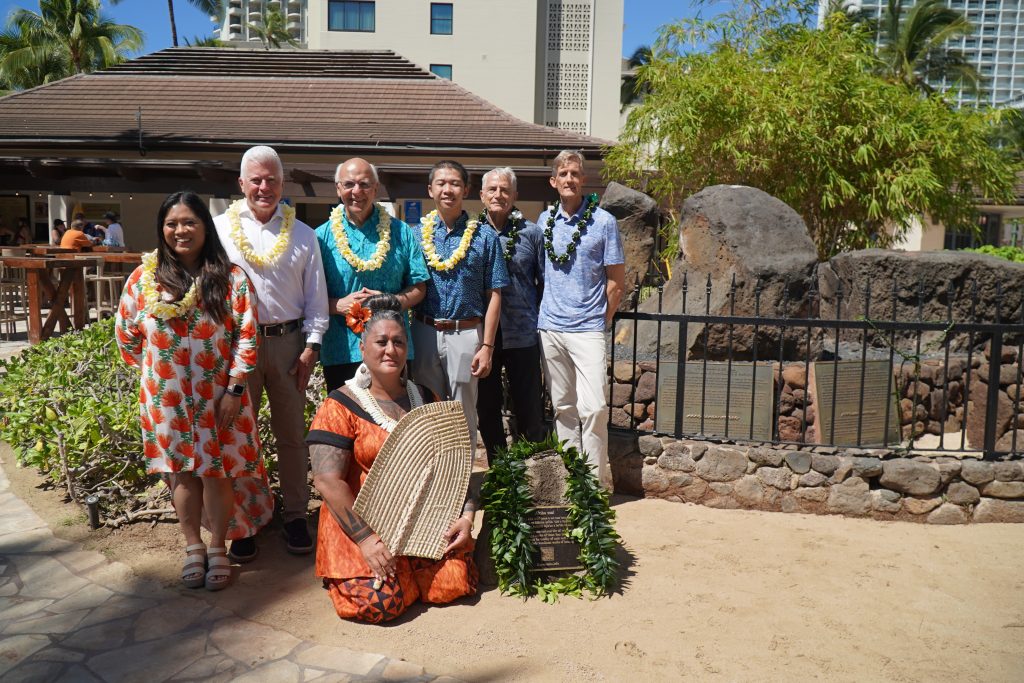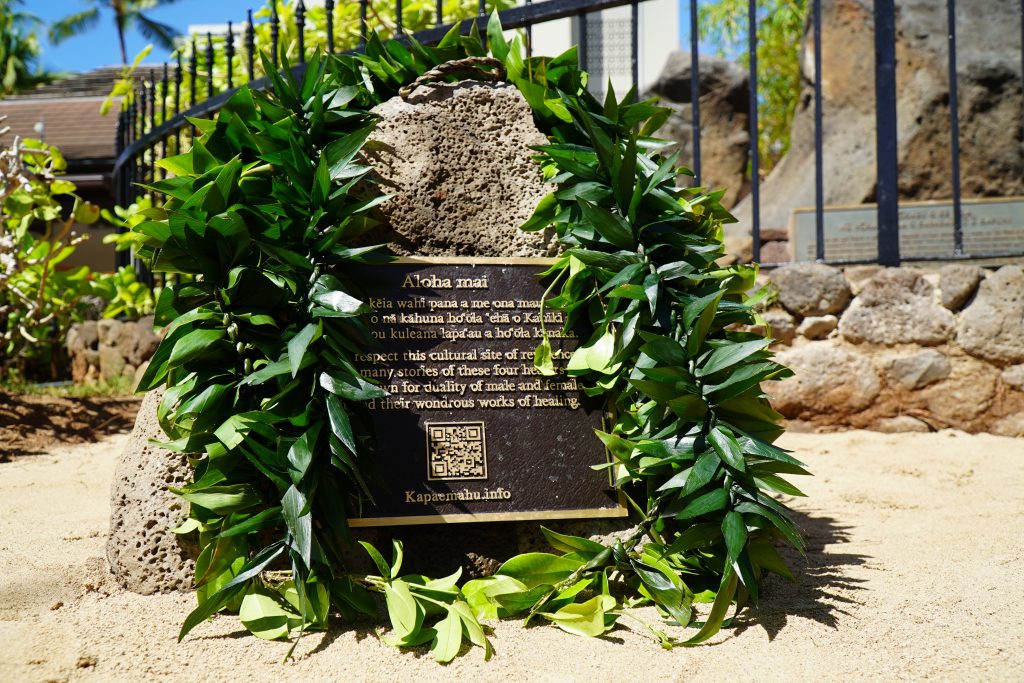
HONOLULU – Mayor Rick Blangiardi unveiled a new plaque Tuesday at the stones of Kapaemahu during a blessing ceremony in Waikīkī. The plaque celebrates four gender fluid Tahitians who shared their healing arts with ancient Hawaiians. This is the first time that the dual male and female spirt of these mahu healers has been fully acknowledged with signage at the site of the stones.
“The stones are an important piece of our past that we don’t want forgotten. Today, we are proud to celebrate Hawaiʻi’s inclusive history,” said Mayor Rick Blangiardi. “Centuries ago, the Tahitian healers were honored and embraced by the Native Hawaiians for their important contributions. Now, we share that appreciation while acknowledging the hard work and dedication of the people who unearthed this link to our past. Our diversity is what makes us strong and brings us together as one community.”

According to legend, boulders were hauled from Kaimukī to Waikīkī, where they stood for centuries, standing in tribute to the Tahitian healers — but their significance was buried, both literally and figuratively. In 1963, they were unearthed from beneath a bowling alley, and in 1997, the site was renovated and has since been diligently preserved by the City and County of Honolulu and dedicated caretakers. Today, the stones stand as a unique cultural monument to healing and inclusion.
“The Stones of Kapaemahu are more than a tourist site, and they deserve to be better understood by locals and visitors alike, “said Kumu Hinaleimoana Wong-Kalu, a prominent teacher and cultural advocate. “They are an insight into our Pacific understandings of male and female, life and healing, and the spiritual connections between us all.”
A QR code is engraved on the plaque, directing people to kapaemahu.info, providing more insight about the history of the stones. Visitors to the website can also access a free augmented reality app called KAPAEMAHUAR which offers a self-guided tour of the stones in both ʻŌlelo Niʻihau and English.
“Monuments are powerful symbols of what and who a community values. Kapaemahu, of all sites, should be a shining example of that idea,” said Dean Hamer, who spearheaded the new site-marker, along with his husband Joe Wilson. “Even as many states in the continental USA are ramping up prejudice and discrimination, the City and County of Honolulu is stepping forward as a place that honors and celebrates human dignity, diversity, and unity.”
Wong-Kalu, Hamer and Wilson also produced and directed an animated short film called Kapaemahu, which shares the oral tradition of the stones. The film, animated by Daniel Sousa, was screened in more than 160 film festivals worldwide.
